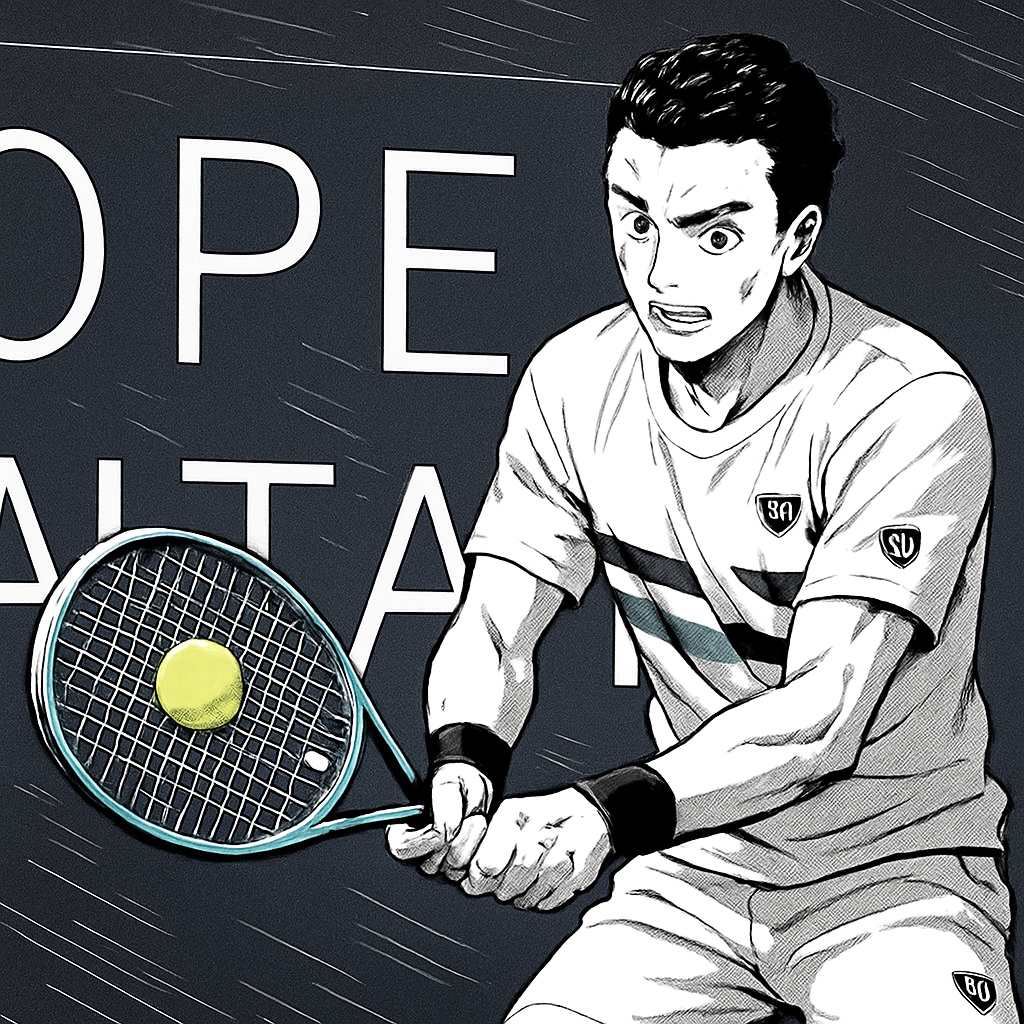In a stunning and bizarre turn of events that has sent shockwaves through the tennis world, Portuguese tennis star Goncalo Oliveira has been handed a four-year ban from the sport after testing positive for a banned substance, a result he claims stems not from intentional doping, but from a passionate kiss.
The Ban and The Alleged Source
The International Tennis Integrity Agency (ITIA) confirmed the suspension for the 34-year-old, who reached a career-high doubles ranking of 59 in 2023. The positive test occurred at a Challenger tournament in Brazil in November 2023, where Oliveira's sample showed traces of the anabolic steroid Boldenone and its metabolites. In its official ruling, the ITIA stated that Oliveira "is deemed to have committed an Anti-Doping Rule Violation."
However, Oliveira's defense, detailed in the ITIA's published decision, presents a scenario unlike any typical doping case. The Portuguese player did not deny the presence of the substance but argued he was the victim of accidental contamination. The source? His girlfriend, who was taking medication for her horse, which contained the very steroid found in his system. Oliveira claimed the substance was transferred to him through kissing and skin-to-skin contact.
A Detailed, Yet Unsuccessful, Defense
Oliveira and his legal team presented a comprehensive, albeit unconventional, case to the independent tribunal. They argued that his girlfriend was administering a veterinary product called Equiton, which contains Boldenone, to her horse in the days leading up to and during the tournament. Oliveira testified that he was in close and constant contact with her, including helping with the horse's treatment and engaging in frequent kissing.
The defense submitted a timeline of events, text messages, and even a photo of the medication to support their claim of inadvertent exposure. They contended that this explained the low concentration of the substance found in his sample, a level they argued was inconsistent with direct, performance-enhancing use.
Despite the detailed account, the tribunal was not convinced. The ruling stated, "The source of the Boldenone was, more likely than not, the product which the Player's girlfriend was administering to her horse. However, the route of ingestion... remains uncertain on the evidence."
The Tribunal's Key Findings and Reasoning
The three-member panel acknowledged that the girlfriend's medication was a plausible source but found Oliveira's specific route of transmission—kissing—to be unproven. The decision highlighted a critical lack of scientific evidence to substantiate that Boldenone could be transferred in significant quantities through saliva or skin contact. The tribunal concluded that Oliveira had failed to meet the necessary burden of proof to establish how the substance entered his body.
Furthermore, the tribunal emphasized the principle of strict liability, a cornerstone of anti-doping regulations. This principle holds athletes solely responsible for any banned substances found in their system, regardless of intent or how it got there. The ruling noted, "It is a necessary and well-established feature of the fight against doping."
Reactions and Fallout
The tennis community has reacted with a mixture of disbelief and sympathy. While the official stance upholds the strict liability rule, many have expressed that Oliveira's case is a tragic and bizarre cautionary tale. A fellow player on the Challenger tour was quoted as saying, "You hear all sorts of excuses, but this one... you just can't make it up. It's a nightmare scenario."
Oliveira, who is currently 34, will be 38 by the time the ban concludes on January 1, 2028, effectively ending his professional career. The ban prohibits him from playing in, coaching at, or even attending any tennis events sanctioned by the governing bodies of the sport. The consequences of the ruling are devastating for the veteran player, whose livelihood has been abruptly terminated.
In a statement released through his management, Oliveira expressed his profound devastation and maintained his innocence: "I have never, ever knowingly taken a banned substance. I am a clean athlete who has dedicated my life to this sport. To have my career end in this manner, because of an accidental exposure, is a heartbreak I cannot put into words. I am exploring all possible avenues for an appeal."
A Cautionary Tale for All Athletes
The case of Goncalo Oliveira serves as one of the most extreme reminders of the unforgiving nature of anti-doping protocols. It underscores the immense responsibility placed on athletes to control their environment and be aware of every potential source of contamination, no matter how far-fetched it may seem.
Key takeaways for professional athletes from this incident include:
- Strict Liability is Absolute: Intent is irrelevant. The mere presence of a banned substance is enough for a violation.
- Vigilance in Personal Life: Athletes must be acutely aware of the medications and supplements used by those in their immediate circle.
- Unconventional Vectors: Potential contamination can come from unexpected sources, including food, drink, and personal contact.
- Documentation is Critical: A strong defense requires irrefutable evidence, which was found lacking in this case.
An anti-doping expert, commenting on the case anonymously, stated, "While the 'kissing defense' is highly unusual, it forces a conversation about the limits of an athlete's control. The rules, however, are designed to be black and white to ensure integrity, even when the circumstances are tinged with gray."
Conclusion: A Career Ended by a Kiss?
While the ITIA upheld its duty to enforce the rules and maintain a level playing field, the ban on Goncalo Oliveira will likely be remembered as one of the most peculiar and tragic doping cases in recent tennis history. Whether one believes his story or not, the outcome is unequivocal: a professional athlete's career is over. His case stands as a stark, almost Shakespearian, warning about the catastrophic consequences that can arise from the most innocent of human interactions, all under the unyielding gaze of anti-doping's strict liability code.

